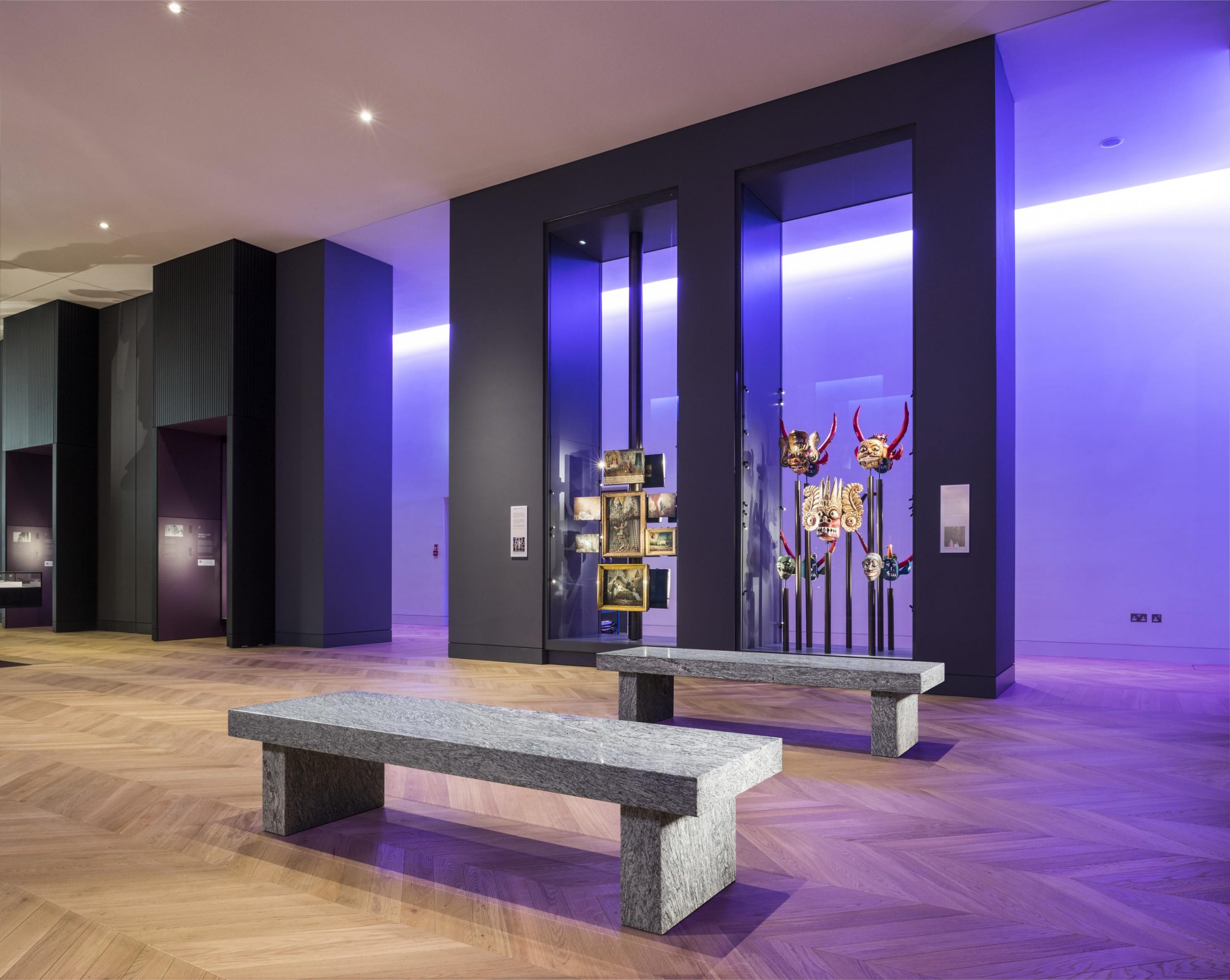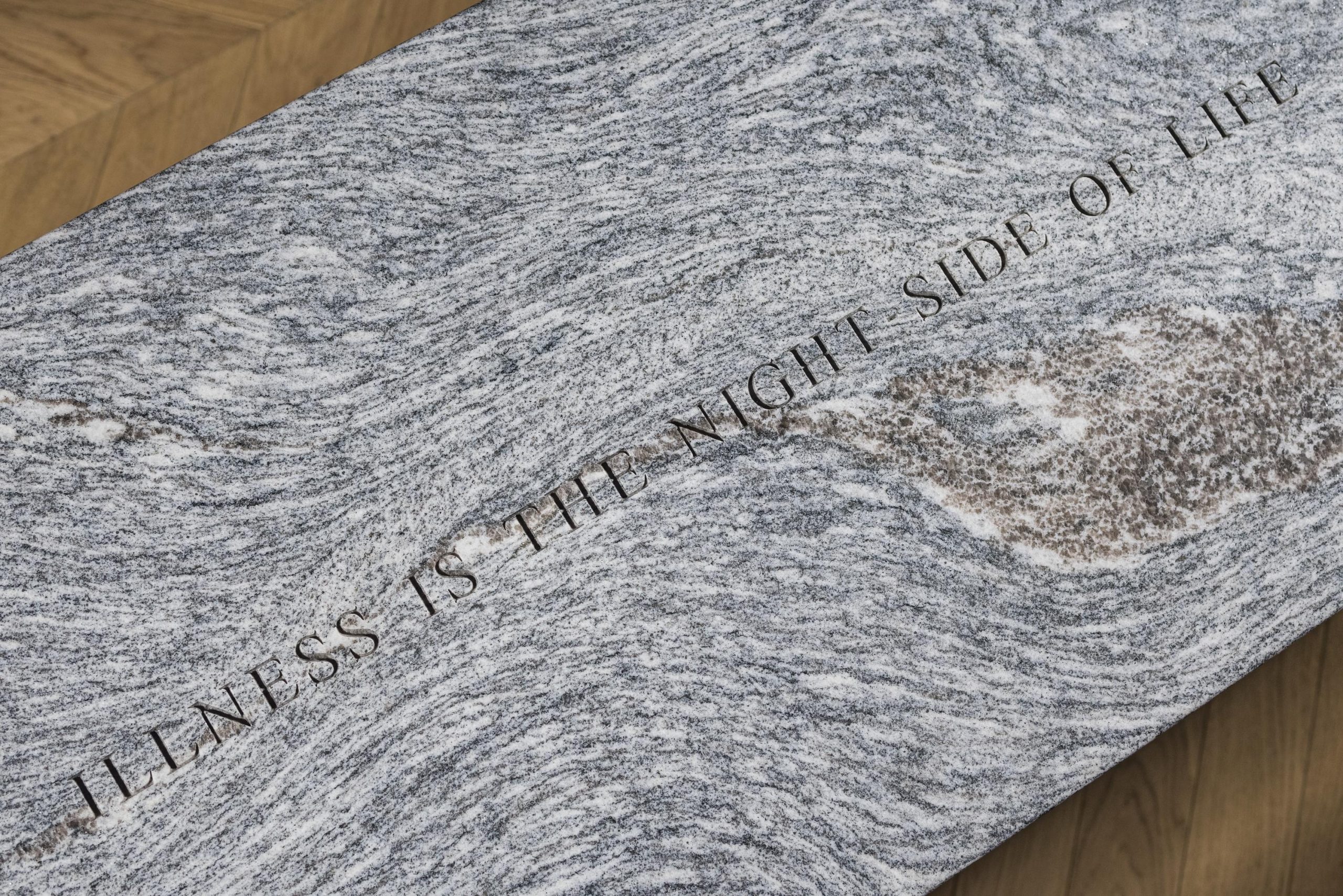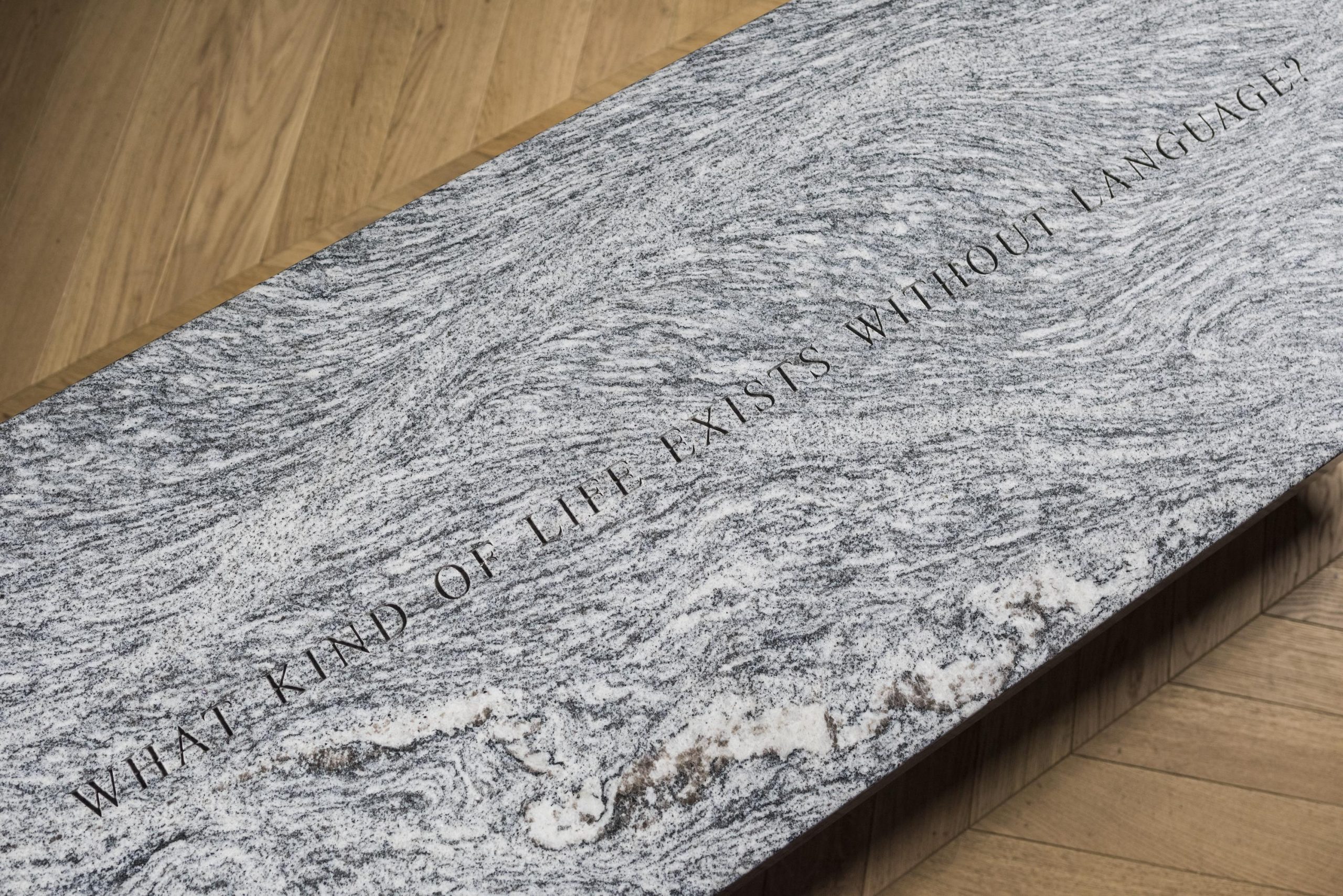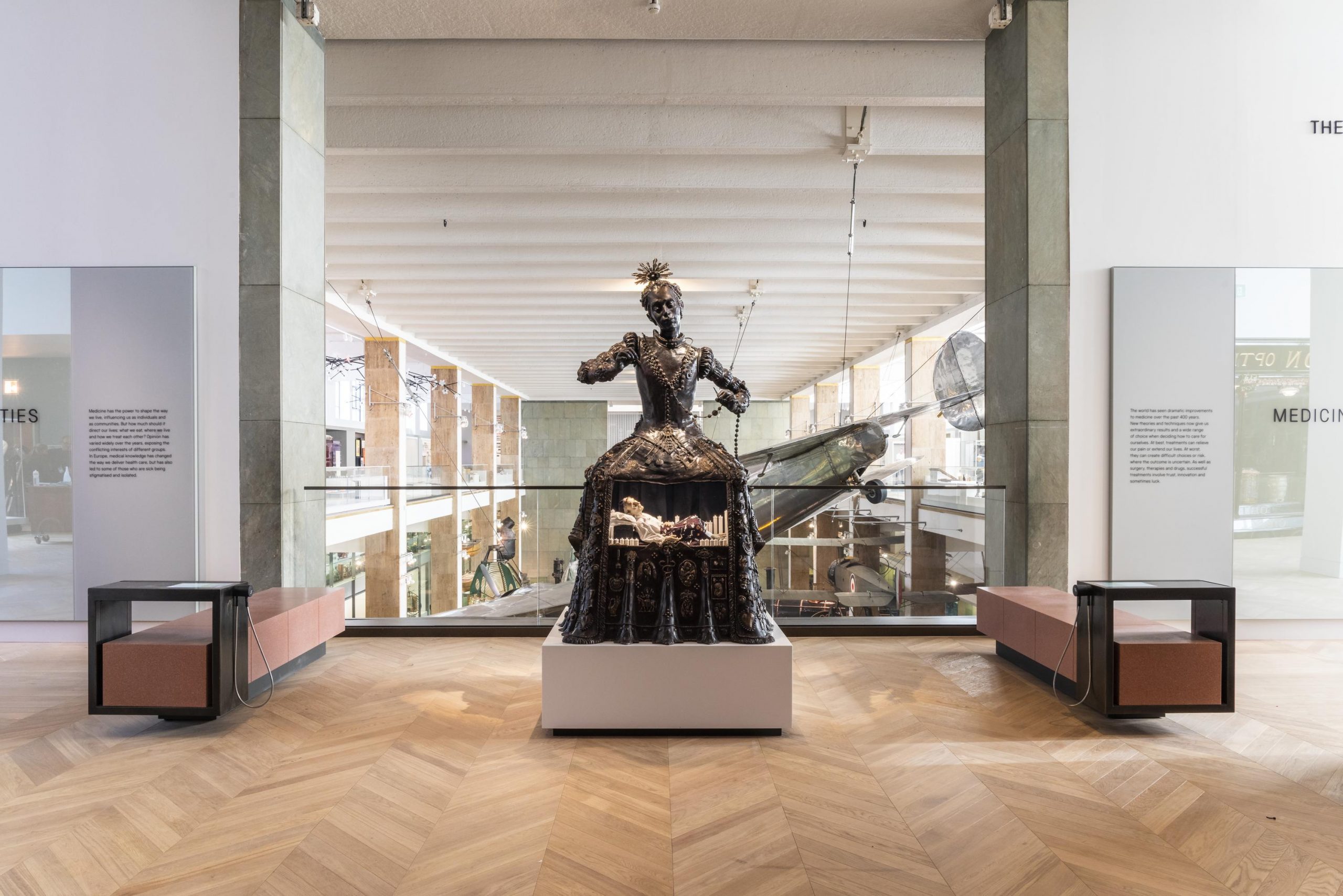Jenny Holzer’s new work For Science creates a space of rest and reflection for visitors exploring ‘Faith, Hope and Fear’, one of five interconnected galleries that make up Medicine: The Wellcome Galleries. Made from Silver Cloud granite, the work comprises two stone benches with texts sandblasted into their seats. The stone evokes a monument or memorial, which speaks to discussions elsewhere in the gallery of how we think about death and dying.

The title ‘Faith, Hope and Fear’ refers to the gallery’s focus on the emotional impact of medicine and the objects, people, ideas, and beliefs to which we turn when facing illness and the disruption it brings.
It considers how our ideas of health and disease are shaped by our social and cultural backgrounds, and acknowledges that modern medicine is one of many approaches people take (and have taken, in different times and places) to managing the unpredictability of sickness and treatment.
Holzer chose the texts to be inscribed into the benches in consultation with the museum team. They originate from two diverse authors who both experienced cancer diagnoses and whose influential writing about illness she describes as “expansive and frank”: Susan Sontag and Paul Kalanithi.

American philosopher Sontag wrote Illness as Metaphor (1978) while being treated for breast cancer. Her opening lines, “Illness is the night side of life” introduce the idea that we have citizenship of two countries throughout our lives – the realms of the well and the sick – and our ‘residence’ in one or the other profoundly affects our own and society’s perceptions of us. The book highlights how the language we use to describe certain diseases can result in stereotyping and stigmatisation of patients.
From her background as a cultural critic, Sontag called for a rejection of metaphor and cultural understandings of illness in favour of empirical science and its objective focus on causes and treatment. Others have disputed this position, contending that metaphor is one of the main ways in which human beings make sense of the world.
Kalanithi’s complex question “What kind of life exists without language?” comes from the memoir, When Breath Becomes Air (2016), published soon after his death from lung cancer.
Kalanithi was used to every tiny movement he made as a neurosurgeon presenting huge potential implications for the patient; his profession laid bare the extraordinary delicacy of cognitive functions such as emotion, memory, and language.

Kalanithi’s diagnosis transformed his perspective from doctor to patient and led him to reflect on the ethical decisions at the heart of his work. The quote Holzer selected refers to the significance of language for meaning in human relationships.
Kalanithi studied English and philosophy before pursuing his medical career and recognised the importance of both disciplines to his chosen field.
“Science may provide the most useful way to organize empirical, reproducible data… [however] its power to do so is predicated on its inability to grasp the most central aspects of human life: hope, fear, love, hate, beauty, envy, honor, weakness, striving, suffering, virtue.”
Holzer’s benches join an important and growing body of works by female artists in the collections of the Science Museum Group. Within ‘Faith, Hope and Fear’ For Science is in conversation with Eleanor Crook’s sculpture Santa Medicina (also on display in the galleries) which likewise draws, albeit in very different ways, on material and social histories of medicine.

Elsewhere in Medicine: The Wellcome Galleries, Siân Davey’s life-size portrait photographs similarly bring different voices to bare on experiences of medicine. Another highlight of the collection is Barbara Hepworth’s Surgery Sketchbook from 1948, the only surviving sketchbook from a two-year period that the artist spent intimately observing surgical procedures.
Holzer’s work was commissioned to mark a year since the opening of the Medicine Galleries. It has not been the year that any of us could have anticipated, but has certainly emphasised the importance of society, community, and empathy in how we understand our medical experiences.
In resting on these works, touching, reading, and discussing the words, we hope that visitors will find a place to pause and take stock.
